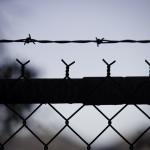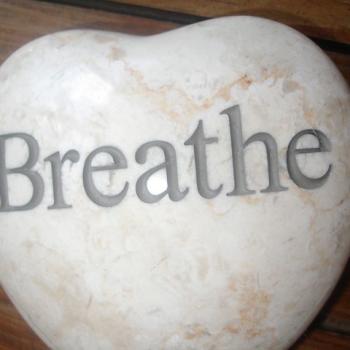
The Art and Craft of Monastic Life
We like to think of our contemporary organizations as well-oiled machines. Corporations function better when we are doing our jobs as leaders well. Our effectiveness and efficiency are the results, the products, of our leadership and organization.
Some people see our current ways of leading as growing from the Industrial Revolution. They understand our ways of working as an assembly line delivering goods and services. Each person in an organization plays their part and the parts come together into a whole. Anyone not doing their job well could bring the entire line to a halt.
I worked on an automobile assembly line the summer after I finished college. The factory taught me important lessons about organization and hard work.
I will never forget the time I spent in a trench on the floor bolting car bodies to chassis.
Many of the places where I have worked expected our work to be like an assembly line. Each of us needed to do our job well so the pieces would fit together in the right way.
Leaders tended to see each of us as replaceable parts of a well-oiled machine.
Some leaders believe it is the machine which is important more than people. As long as the line keeps running, turning out results, people can be replaced.
The monks I know do not have an industrial understanding of their labor. They tend to function more like artisans and craftspeople from before the Industrial Revolution. Each member of the community has a unique part to play.
Monastic Industries
Monastic communities generate revenue to be financially independent. Benedict’s Rule gives guidelines for daily manual labor as well as prayer and contemplation.
Each community determines how it will support itself. A few monasteries are able to earn enough from hospitality to people on retreat. Most supplement retreat revenue with bookstores and other community industries. The hermitage where I am an oblate produces bread, granola, honey, and fruitcakes for sale. One of the monks composes music and several paint pictures. Many monks write books.
Monasteries make pottery and at least one produces wooden caskets. Monasteries in Belgium brew some of the best beer in the world. A few in the United States have followed suit.
This is in addition to giving spiritual counsel and maintaining the monastery.
Monks do not see the community working as an assembly line. Each member is unique with their own gifts and challenges. Leadership is not focused on merely delivering results.
Monastic work is more than getting everyone to do their part on time and create a whole.
Being a community, rather than a well-oiled machine, shapes how each person approaches work. Work in a monastic community is spiritual practice.
Monks are not hired to perform specific tasks. Monasteries do not recruit people because they have a reputation for chanting or praying.
Members of monastic communities are called to monastic life.
Monastic leaders consider the needs of individual members along with community needs.
How will facing these challenges help this person grow in that area of life? What are the spiritual implications of performing this task?
Monks are encouraged to view their work as an art and a craft, not an assembly line. Members of the community are not mere cogs on a wheel. Each member contributes to community life from their best self.
Work as Spiritual Practice
The art and craft of monastic life is not primarily focused on producing results. Manual labor is as much a spiritual practice as contemplation or reflective reading.
Work is a fact of life, even monastic life. While the financial strength of the community depends on it, work is not solely a financial act. Monks express spiritual life through their work.
Each member of the community is not only practicing economy or efficiency. The Sacred is as present in their everyday work as in their worship or reflection.
When I spend time in prayer or reflection, I sink into the stillness of Sacred truth. Spiritual life surrounds us and fills us beyond thoughts, words, or feelings. The challenge for me is to work in a way which reflects the presence of spiritual life.
There have been times when my leadership was the product of force or stress. The influence I exercised caused other people to feel stressed and forced. Our work together did not reflect our best selves.
Monks have shown me by their examples how to practice the art and craft of monastic life.
Work flows when I am working from my best self. I share my deepest self, my core values with the people around me. My leadership brings out the best in the people with whom I am working. Together, our work reflects the Sacred truths of spiritual life.
When I understand my work as a spiritual practice it is an expression of stillness. It is not about forcing things or people to turn out the way I want them to be. I am more open to the possibilities around me.
Brother Lawrence
The teachings and letters of one 17th Century monk have been collected into a book. Brother Lawrence was a lay member of a monastic community in Paris, France. His words, in The Practice of the Presence of God, describe his understanding of the Sacred.
The Sacred must be as present in the kitchen while he is washing dishes as when he prays.
The monks I know show me the importance of Sacred presence.
In the art and craft of monastic life there are no small tasks, no unimportant moments. Each of us works in ways which reflect the significance of who we are.
When we lead like monks we demonstrate the sacred presence of our inner selves. Leading from our true selves brings out the best in the people around us.
How do you practice the art and craft of monastic life in your work?
When does your leadership reflect your deepest truths?
[Image by Bernard Spragg]
Greg Richardson is a spiritual life mentor and leadership coach in Southern California. He is a recovering attorney and university professor, and a lay Oblate with New Camaldoli Hermitage near Big Sur, California. Greg’s website is StrategicMonk.com, and his email address is [email protected].












